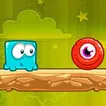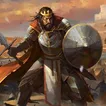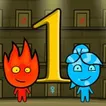

























































Unleashing the Thrill of Monster Games
Monsters have always captivated the human imagination, lurking in the shadows of our myths and stories. In the digital age, this fascination has manifested into a thriving genre of entertainment: monster games. These games offer a virtual playground where the grotesque, the mythical, and the fantastical come to life, providing an adrenaline rush and a sense of accomplishment that is hard to replicate in other gaming genres.
The allure of monster games lies in their ability to tap into our primal fears and curiosities. Confronting a digital beast evokes a rush of excitement and a test of courage, albeit from the safety of our screens. The term “monster game” encompasses a broad spectrum of experiences, from strategic battles against formidable creatures to the nurturing and evolution of your own monstrous companions.
These games are more than just a pastime; they are a portal to worlds where the extraordinary becomes the norm, and players are constantly challenged to outwit and outplay the creatures that roam these realms. The psychological draw is potent—players are not just escaping reality but also mastering it by facing and overcoming the monstrous.
Whether it’s the thrill of the hunt, the joy of discovery, or the satisfaction of leveling up, monster games engage players on multiple levels. They satisfy a deep-seated curiosity about the unknown and the otherworldly, while also offering a space for strategic thinking, creativity, and social interaction. The genre’s universal appeal ensures that monster games continue to be a formidable force in the gaming industry, captivating the hearts of players across the globe.
Introduction to Monster Games
Monster games are a diverse and expansive genre, encompassing a range of gameplay experiences that cater to various interests and skill levels. At their core, these games involve creatures of all shapes and sizes, each with unique abilities and backstories that enrich the gaming universe. The scope of monster games extends from intense, strategic battles where players pit their wits against formidable foes, to serene environments where nurturing and evolving a creature becomes the heart of the experience.
The importance of monster games in the gaming industry cannot be overstated. They have become a staple in the gaming diet of many enthusiasts, offering a unique blend of excitement, strategy, and narrative that is difficult to find in other genres. These games often combine elements of role-playing, strategy, and adventure, allowing players to engage in a variety of activities such as combat, exploration, and creature management.
What makes monster games particularly intriguing is their ability to satisfy our innate curiosity about the unknown. They provide a playground for the imagination, where players can interact with and learn about creatures that defy the mundane realities of everyday life. This interaction is not limited to mere combat; many games offer complex ecosystems where players can breed, trade, and even genetically modify their monsters, leading to an ever-evolving gameplay experience.
The universal appeal of monster games is evident in their widespread popularity. They resonate with a primal part of the human psyche, offering an opportunity to engage with the fantastical and the otherworldly. Whether you’re a seasoned gamer looking for a deep strategic challenge or a casual player interested in the whimsical aspects of creature collection, monster games offer something for everyone, solidifying their place as a beloved and enduring genre in the world of gaming.
The Evolution of Monster Games
Monster games have undergone a remarkable transformation since their inception, evolving alongside technological advancements and changing player preferences. In their early days, these games were simple in design, often limited to basic graphics and straightforward gameplay. However, as technology progressed, so did the complexity and depth of these virtual worlds.
The genre’s evolution is marked by several key developments. Graphics have shifted from pixelated images to stunningly realistic and sometimes artistically stylized representations, bringing monsters to life with incredible detail. Sound design has also become more sophisticated, with dynamic scores and effects that heighten the sense of immersion.
Gameplay mechanics have grown in complexity, offering players a richer array of actions and strategies. Early monster games often relied on simple turn-based combat, but as the genre matured, it embraced a variety of styles, including real-time strategy and immersive role-playing elements. This has allowed players to experience the thrill of monster games in myriad ways, from fast-paced battles to thoughtful, strategic planning.
The narrative aspect of monster games has also seen significant development. What once were minimal backstories have become elaborate tales that draw players into the game’s universe. These stories often play a crucial role in the gameplay itself, influencing player decisions and the development of their creatures.
The social aspect of gaming has transformed the genre as well. With the rise of online gaming, monster games have fostered communities where players share strategies, trade creatures, and compete against one another. This has not only expanded the social dimension of gaming but also contributed to the longevity of the genre, as players remain engaged through community-driven content and events.
As monster games continue to evolve, they reflect the changing landscape of gaming technology and culture, adapting to provide fresh and exciting experiences for new generations of players.
The Mechanics of Monster Gaming
At the heart of monster games lies a set of core gameplay mechanics that define the genre and dictate the flow of the player’s journey. These mechanics often include turn-based combat, where players must strategically plan their moves and anticipate their opponent’s actions. This system offers a methodical pace, allowing for thoughtful decision-making and the careful execution of tactics.
Real-time strategy elements are also prevalent, injecting a sense of urgency and dynamism into gameplay. Players must think on their feet, making quick decisions to outmaneuver their monstrous adversaries or to command their own creatures in the heat of battle. This blend of speed and strategy creates a thrilling and engaging experience that keeps players on the edge of their seats.
Progression systems are another cornerstone of monster gaming mechanics. Players typically start with a basic creature or set of creatures and, through battles and achievements, gain the resources needed to evolve and enhance their monstrous arsenal. This sense of growth and advancement is a powerful motivator, driving players to invest time and effort into developing their creatures and strategies.
The mechanics of monster games support a diverse range of player experiences, from those who enjoy the solitary challenge of a campaign to those who thrive in competitive multiplayer environments. The depth and variety of gameplay mechanics ensure that there is always something new to learn and master, which is key to maintaining long-term engagement with the genre.
In essence, the mechanics of monster gaming are a delicate balance between strategy, action, and progression. They provide the framework for a deeply satisfying gaming experience that caters to a wide audience, offering a rich tapestry of challenges that are as monstrous and varied as the creatures that inhabit these games.
Strategic Depth and Tactical Gameplay
Monster games often shine in their strategic depth and tactical gameplay, providing a cerebral challenge that demands careful planning and foresight. At the heart of this challenge is resource management, a key element that requires players to balance the allocation of limited assets such as time, in-game currency, and creature abilities. Successful management can mean the difference between victory and defeat, especially in scenarios where every decision can have long-lasting consequences.
Combat planning is another layer of strategy that adds to the richness of these games. Players must not only understand the strengths and weaknesses of their own monsters but also anticipate and counter the strategies of their opponents. This often involves a complex dance of positioning, attack selection, and the use of special abilities at just the right moment.
The intellectual satisfaction derived from mastering these strategic and tactical elements cannot be understated. It is the thrill of outsmarting a particularly tough opponent or the gratification of executing a well-planned strategy that elevates monster games from mere entertainment to a mentally stimulating experience. Players take pride in their strategic prowess, reveling in the moments where their tactical decisions lead to triumphant success.
In essence, the strategic depth and tactical gameplay of monster games engage the mind in a way that few other genres can match. They challenge players to think critically and adaptively, rewarding those who can navigate the complexities of monster warfare with skill and ingenuity. Whether through solo play or in competitive arenas, the strategic and tactical gameplay of monster games continues to captivate and challenge gamers around the world.
Role-Playing and Storytelling in Monster Games
Role-playing elements in monster games allow players to step into the shoes of a hero, a monster tamer, or even the creatures themselves, offering a deeply personal connection to the game world. These elements often extend beyond mere character customization, inviting players to make choices that influence the narrative and shape their journey through the game. As players develop their characters, they not only enhance their abilities but also carve out a unique identity within the game’s universe.
Storytelling is another integral aspect of monster games, providing context and meaning to the player’s actions. Rich lore and intricate plotlines transform gameplay into an epic saga, where every battle is a clash of destinies and every victory is a chapter in a grander tale. The narrative weaves together the histories of diverse monsters and the worlds they inhabit, creating a tapestry of myths and legends that players can explore and expand upon.
The combination of role-playing and storytelling creates an immersive experience that captivates players, drawing them into a narrative where they are both authors and protagonists. Through their interactions with the game world and its inhabitants, players craft their own stories of triumph, betrayal, and adventure. This personal investment in the narrative enhances the emotional impact of the game, making victories more exhilarating and setbacks more poignant.
In summary, role-playing and storytelling are essential components of monster games, enriching the gameplay with complexity and emotional depth. They allow players to experience the thrill of creating and living out their own monster-filled legends, ensuring that each playthrough is a unique and memorable adventure.
Exploration and Discovery in Monster Worlds
Exploration and discovery are at the very heart of monster games, igniting a sense of wonder as players venture into uncharted territories. These worlds are often vast and teeming with life, filled with hidden nooks and crannies that hold secrets waiting to be uncovered. The thrill of discovery drives players to delve deeper into the game, pushing the boundaries of the known map and often rewarding their curiosity with rare creatures, unique items, or lore that enriches the game’s story.
The joy of exploration is amplified by the diversity of environments and ecosystems that monster games present. From dark, foreboding dungeons to lush, vibrant forests, each setting offers a distinct atmosphere and a new array of monsters to encounter. This variety ensures that exploration remains fresh and engaging, as players never know what marvels they might stumble upon next.
As players chart their course through these monster worlds, they often encounter puzzles and challenges that test their problem-solving skills. Overcoming these obstacles not only provides a sense of achievement but also often grants access to previously inaccessible areas, further fueling the desire to explore.
Moreover, the act of discovery itself is a reward, as it often leads to the acquisition of new monsters to collect and train. The prospect of finding and taming the rarest and most powerful creatures is a compelling motivation for many players, driving them to explore every corner of the game world.
In essence, exploration and discovery form a core pillar of the monster game experience, offering endless opportunities for adventure and the excitement of the unknown. It’s this promise of new horizons, teeming with fantastical beasts and untold stories, that keeps players returning to these worlds, eager to see what lies just beyond the next ridge.
The Art and Design of Monsters
The art and design of monsters in gaming are as critical as the gameplay itself, serving as the visual and emotional bridge between the player and the fantastical worlds they explore. The creative process behind these creatures is a blend of imagination, artistry, and technical skill, resulting in a diverse array of beings that range from the terrifyingly grotesque to the whimsically charming.
Designers draw inspiration from a myriad of sources, including mythology, nature, and pure fantasy, to craft monsters that are not only visually distinct but also resonate with the game’s thematic elements. The color palette, texture, and silhouette of each creature are carefully considered to convey its personality and role within the game’s ecosystem. This attention to detail ensures that each monster is memorable and contributes to the overall atmosphere of the game.
The impact of visual design is complemented by sound design, where the roars, growls, and cries of monsters add a layer of auditory immersion. The right sound can make a creature feel powerful, eerie, or even endearing, further enhancing the player’s connection to these digital beings.
Animation also plays a pivotal role in bringing monsters to life. The way a creature moves and interacts with its environment can evoke a sense of weight, agility, or otherworldliness. Animators strive to create fluid and believable movements that align with the creature’s design, reinforcing the illusion of a living, breathing entity within the game world.
In summary, the art and design of monsters are fundamental to the gaming experience, captivating players through a combination of visual splendor and auditory impact. It is through the meticulous crafting of these elements that monster games achieve a level of immersion that transports players into realms where the wild and wondrous reign supreme.
Humor and Quirkiness in Monster Games
Despite the often intense and epic nature of monster games, many also embrace humor and quirkiness, offering players a delightful respite from the high stakes of battling and strategizing. This lighthearted approach can manifest in various ways, from the whimsical designs of certain creatures to the witty dialogue and unexpected scenarios that unfold during gameplay.
The inclusion of humor in these games serves as a reminder that, at their core, games are about having fun. It’s in the absurdity of a monster’s antics or the clever puns hidden in their names that players find a moment of joy and laughter. These comedic elements can also create a unique bond between the player and their creatures, endearing them to their digital companions in a way that transcends the typical player-character relationship.
Moreover, quirkiness in monster games often leads to unexpected gameplay mechanics or challenges that break the mold of traditional gaming experiences. These can range from bizarre quests to unconventional monster abilities that defy logic but bring a smile to the player’s face. It’s this willingness to play with and subvert genre conventions that keeps the gameplay fresh and engaging.
In essence, humor and quirkiness are the secret spices that can elevate a monster game from good to great. They provide a counterbalance to the tension of combat and the complexity of strategy, ensuring that players’ experiences are not just thrilling, but also joyfully memorable. Through laughter and levity, monster games demonstrate that even in a world filled with fearsome beasts, there’s always room for a little light-hearted fun.
The Social and Community Aspects of Monster Games
Monster games often transcend the boundaries of individual play to foster vibrant communities where camaraderie and shared experiences take center stage. These social aspects are not mere byproducts but integral components of the genre, as many games encourage cooperation, competition, and communication among players.
In multiplayer environments, players can form alliances or guilds, creating microcosms of society where teamwork and social interaction are key to overcoming challenges. Sharing strategies and pooling resources become part of the collective effort to achieve common goals, whether it’s defeating a powerful boss or dominating in player-versus-player combat.
The community aspect also extends to the sharing of knowledge and experiences. Veteran players often take on mentor roles, guiding newcomers through the complexities of the game. Forums, social media groups, and in-game chat systems buzz with discussions about monster tactics, breeding tips, and the latest discoveries within the game world.
Events and competitions are another social catalyst, uniting players in friendly rivalry and collective achievement. These gatherings, whether online or in real-life meetups, solidify the sense of community as players bond over shared interests and the love of monster gaming.
Ultimately, the social and community dimensions of monster games enrich the gaming experience, transforming what could be a solitary activity into a shared adventure. It’s within these digital communities that players find not just opponents and allies, but also friends and a sense of belonging.
Survival and Endurance Challenges
Survival and endurance challenges in monster games add a gripping layer of intensity to the genre, pushing players to their limits as they manage scarce resources and fend off relentless attacks. These games often place players in hostile environments where every decision could mean the difference between life and death. The constant threat of looming dangers requires players to strategize not only for immediate threats but also for long-term survival.
Resource management becomes a critical skill, as players must judiciously allocate food, materials, and other essentials to sustain themselves and their monsters. Crafting systems are frequently integrated, allowing players to create tools, shelters, and defenses that can mean the difference between surviving another night or falling prey to the terrors that stalk the darkness.
The psychological thrill of enduring against all odds is palpable in these games. The tension of navigating through treacherous landscapes, conserving energy, and maintaining the health of both player and creature companions creates a deeply engaging experience. The satisfaction derived from overcoming these survival challenges is immense, rewarding the player’s perseverance and strategic planning with a profound sense of accomplishment.
Moreover, these survival elements often interweave with the core monster game mechanics, such as combat and exploration. Players must not only survive the elements but also the creatures that inhabit these worlds, some of which may be hunted for resources or tamed to assist in the player’s survival efforts.
In essence, survival and endurance challenges in monster games test the player’s resolve and adaptability, offering a compelling and often harrowing experience that stands as a testament to the human spirit’s resilience in the face of monstrous adversity.
The Future of Monster Games
As we peer into the horizon of gaming, the future of monster games is poised to be shaped by emerging technologies that promise to redefine our experiences. Virtual Reality (VR) and Augmented Reality (AR) stand at the forefront of this evolution, offering players unprecedented immersion into the worlds of their favorite creatures. With VR, the barriers between player and game dissolve, allowing for a visceral experience where one can almost feel the dragon’s breath or the ground tremble beneath a behemoth’s weight. AR, on the other hand, brings the thrill of monster games into our physical world, turning familiar surroundings into playgrounds for fantastical beasts.
Artificial Intelligence (AI) is another transformative force, with the potential to create more dynamic and responsive game worlds. AI-driven monsters could learn from player behavior, leading to unpredictable and intelligent adversaries that adapt to strategies and provide a constantly evolving challenge. This level of interaction could also extend to monster behaviors and ecosystems, creating living, breathing environments that react to the player’s presence and actions.
The social fabric of monster games is likely to become even more intricate, with shared AR experiences and VR-enabled multiplayer arenas. These technologies could foster deeper connections between players, as they collaborate or compete in more tangible and engaging ways.
Accessibility and cross-platform play are also expected to shape the future, as games become more inclusive and available to a wider audience. This will likely lead to an even more diverse and vibrant community of monster game enthusiasts.
In conclusion, the future of monster games is bright with the promise of innovation. As technology advances, so too will the ways in which we interact with and enjoy these games, ensuring that the genre continues to thrill and engage players for years to come.
Conclusion: The Enduring Appeal of Monster Games
The enduring appeal of monster games is a testament to their ability to captivate and challenge players in a multitude of ways. These games strike a unique balance between the thrill of the unknown and the satisfaction of strategic mastery. They offer a rich blend of storytelling, role-playing, and tactical gameplay, set against a backdrop of diverse and imaginative worlds. The artistry behind the monsters themselves fuels our fascination, while the social and community aspects build bonds that extend beyond the screen.
As we navigate through the trials of survival and the joy of discovery, monster games tap into our primal instincts and our love for myths and legends. They provide a space where humor and quirkiness can coexist with epic battles and harrowing adventures. It is this multifaceted nature that ensures monster games remain a beloved staple in the gaming landscape, continually evolving to offer new experiences and challenges.
Looking ahead, the future of monster games is as promising as it is exciting. With the integration of emerging technologies, the genre is set to offer even more immersive and engaging experiences. The enduring appeal of monster games lies not just in their current form, but in their potential to grow and adapt, ensuring that they will continue to be a source of fascination and enjoyment for players around the world.